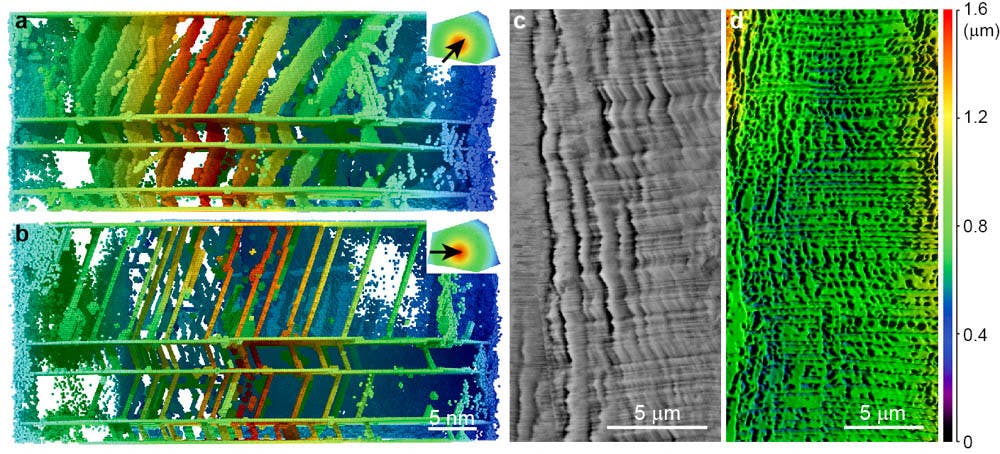A recent University study published in Nature explored ways to prevent one of the most pertinent issues in engineering: material fatigue. In studies of specialized structures called nanotwins within metals, University researchers — led by Huajian Gao, professor of engineering — saw reduced strain effects of repeated stress on metals.
Metal fatigue is a central topic of study in materials science, with applications ranging from building longer lasting airplanes and bridges to designing moving parts in smartphones and pacemakers. But studying the effects of stress on metal is very complex, said Haofei Zhou, a post-doctoral researcher working with Gao. “It is quite an important field, but very complicated because the stress and strain are always changing, so we can never predict the fatigue life of a metal.”
The researchers delved into the complicated realm of materials science by observing experimental results from collaborators at the Chinese Academy of Sciences, who tested the effects of stress on copper samples with nanotwin boundaries.
Metals are made out of small crystals that compose the “grains” of the material. Each of these crystals has a distinct orientation, and the areas between the crystals are called grain boundaries.
“A nanotwin boundary means the crystals have mirror symmetry across the grain,” Gao said. Nanotwin boundaries are incrediblly dense — “on the nanometer scale, so you can think of twin boundaries as one of the perfect grain boundaries.”
Boundaries are notable because they can prevent the movement of dislocations: areas that are sites of deformation. The movement of a dislocation is similar to a wrinkle moving through a carpet, Gao said. “When the wrinkle is moving, it propagates from one side to another and the carpet gets shifted a little bit,” which is “how metals deform,” Gao said. “Normally, the strength is low because it’s easy to propagate a wrinkle. But imagine you put a boundary that will make the wrinkle harder to dislocate and move — this increases the strength of the material.”
By creating nanotwins, Gao’s group aimed to stop the propagation of dislocations and increase the strength of the metal samples. “Copper’s strength is very low, but nanotwinning can make it more than ten times stronger,” Gao said. Zhou added that “after 10,000 stress cycles, we barely saw damage accumulation inside of the grain.”
As with most scientific studies, however, conclusions and applications are limited in scope. David Nowell, professor of engineering science at the University of Oxford and editor of the Journal of Strain Analysis, commended the University’s study for its identification of unique “necklace” dislocations and results, but said there was a gap between the conclusions and practical applications.
“One doesn’t tend to use copper in any application where you want structural strength,” Nowell said. “But one needs studies like this to put the basic science in place for what might be 10 or 20 years down the track.”
Atieh Moridi, a post-doctoral mechanical engineering research associate at the Massachusetts Institute of Technology, said the study holds promise and approaches an old problem in a new way. “There’s still a lot of room for further development to be able to upscale such a process and make it less dependent on the twinning orientation,” she said.
Gao also mentioned the financial and technical constraints associated with inducing metals with the nanotwin boundaries. But existing twinned materials such as Twinning-Induced Plasticity steel and certain alloys show “extraordinary properties” and have garnered interest from car manufacturers and the defense industry, he said.
The failure of materials has been studied for over a century and is vital to increasing the longevity of items integral to modern life, but the progress of the complex field is very slow, Gao said. “Generally, we haven’t found an effective way of controlling fatigue,” he said. “I think that’s part of the reason why our work has been accepted by the journal Nature — it is a new idea in a very difficult, challenging field.”





